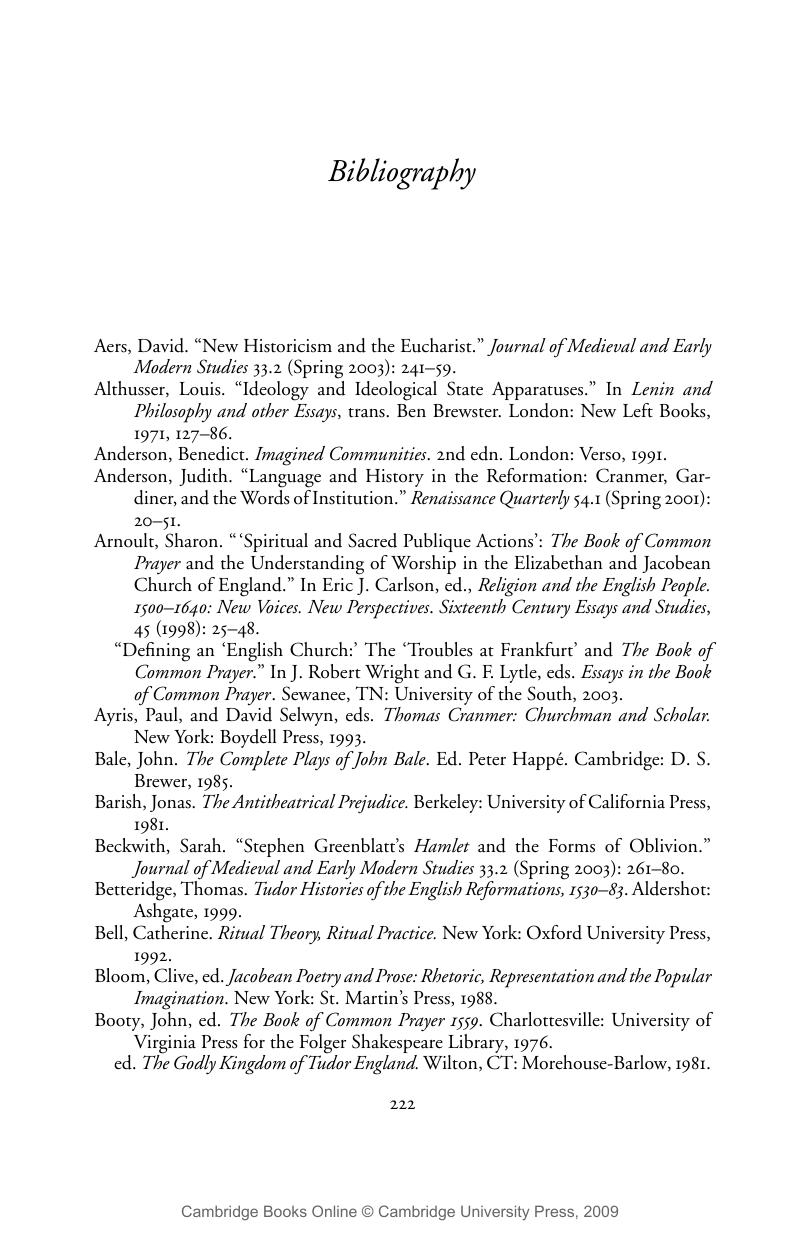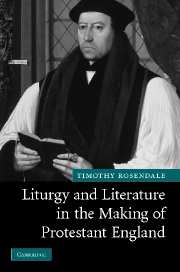Bibliography
Published online by Cambridge University Press: 22 September 2009
Summary

- Type
- Chapter
- Information
- Liturgy and Literature in the Making of Protestant England , pp. 222 - 232Publisher: Cambridge University PressPrint publication year: 2007



